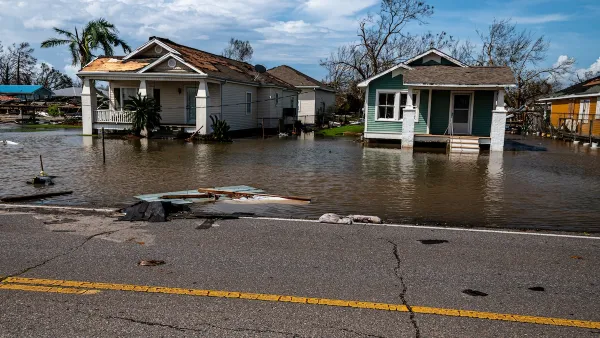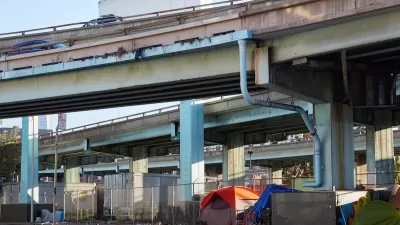Periodically in the affordable housing world, a few of us acknowledge that the vast majority of low-income people live in unsubsidized rentals in one- to four-unit buildings, and we wonder how to preserve and improve those units. Here is a way.
How does one go about working with landlords, often who own only a few units, to keep their units up to code and affordable?
The conversations I've heard on how to do this have mostly focused on the financing and capital investments side, but a panel I attended about rapid rehousing last week at the National Alliance to End Homelessness conference made me wonder about support on the operations side as well.
Rapid rehousing is part of the growing housing-first approach to homelessness, which stipulates that stable housing is the first step toward dealing with homelessness, not the last. A rapid rehousing program helps with housing location, provides financial assistance for a short period of time (often four to six months), and case management. They tend to be run by nonprofits, using a combination of public and private funding.
Why would a landlord want to work with such a program, especially since the rents are generally limited to the fair market rent?
The presenters (Zachary Brown, WV Coalition to End Homelessness; Ben Catell Noll, Friendship Place; Beth Fetzer-Rice, Salvation Army in Central Ohio; and Michael Shore, HOM Inc) had a number of potential answers. Along with giving the feeling of doing something good and being part of something larger (which they absolutely worked), they said . . .
FULL STORY: Could an Anti-Homelessness Program Stabilize Affordable Housing?

Planetizen Federal Action Tracker
A weekly monitor of how Trump’s orders and actions are impacting planners and planning in America.

Vehicle-related Deaths Drop 29% in Richmond, VA
The seventh year of the city's Vision Zero strategy also cut the number of people killed in alcohol-related crashes by half.

As Trump Phases Out FEMA, Is It Time to Flee the Floodplains?
With less federal funding available for disaster relief efforts, the need to relocate at-risk communities is more urgent than ever.

Berkeley Approves ‘Middle Housing’ Ordinance
The city that invented single-family zoning is finally reckoning with its history of exclusion.

SEPTA Budget Slashes Service by 45 Percent
The Philadelphia-area transit agency is legally tasked with maintaining a balanced budget. Officials hope the state will come to the rescue with additional funding.

Connecticut Governor Vetoes Housing Bill
Gov. Lamont reversed his view on a controversial affordable housing bill that would have required municipalities to zone for set amounts of affordable housing to receive state funding.
Urban Design for Planners 1: Software Tools
This six-course series explores essential urban design concepts using open source software and equips planners with the tools they need to participate fully in the urban design process.
Planning for Universal Design
Learn the tools for implementing Universal Design in planning regulations.
Heyer Gruel & Associates PA
JM Goldson LLC
Custer County Colorado
City of Camden Redevelopment Agency
City of Astoria
Transportation Research & Education Center (TREC) at Portland State University
Camden Redevelopment Agency
City of Claremont
Municipality of Princeton (NJ)





























